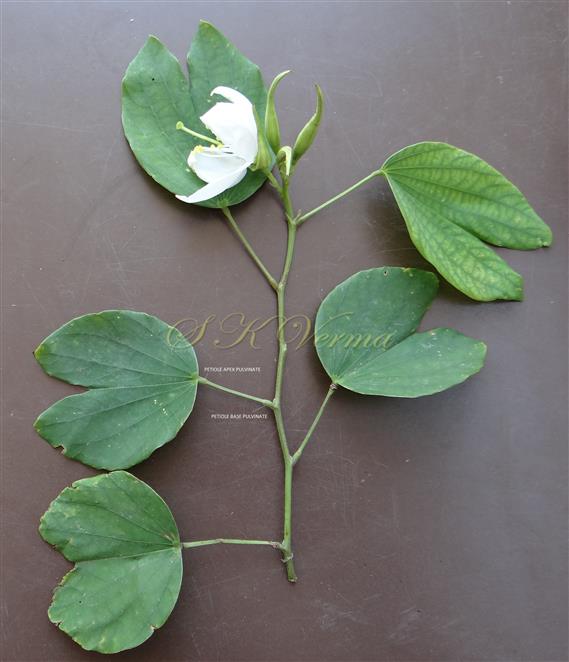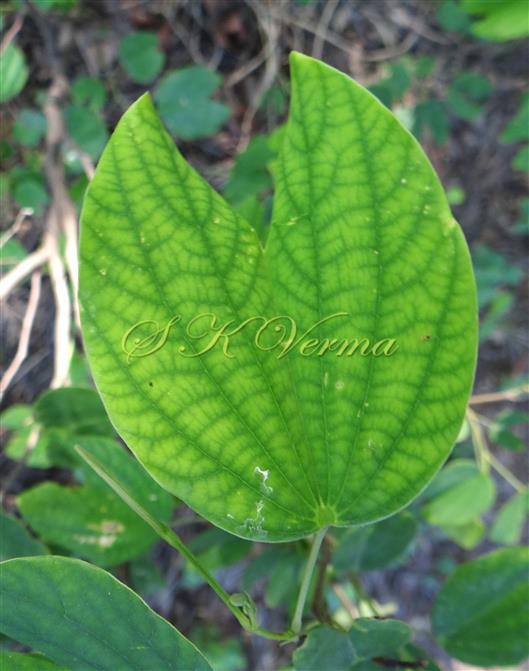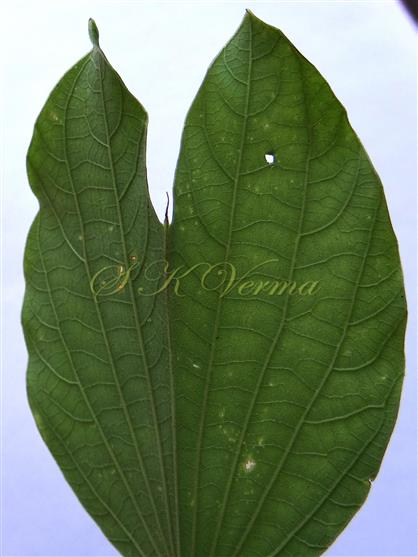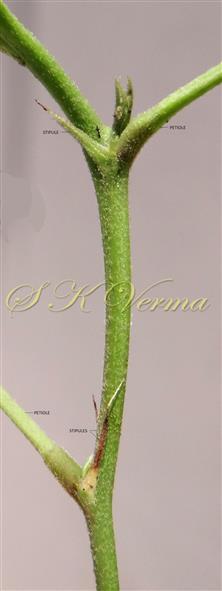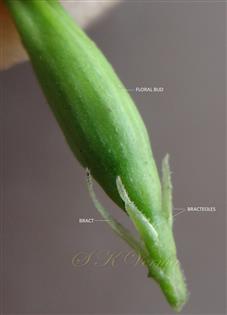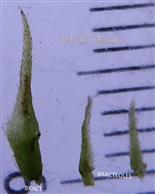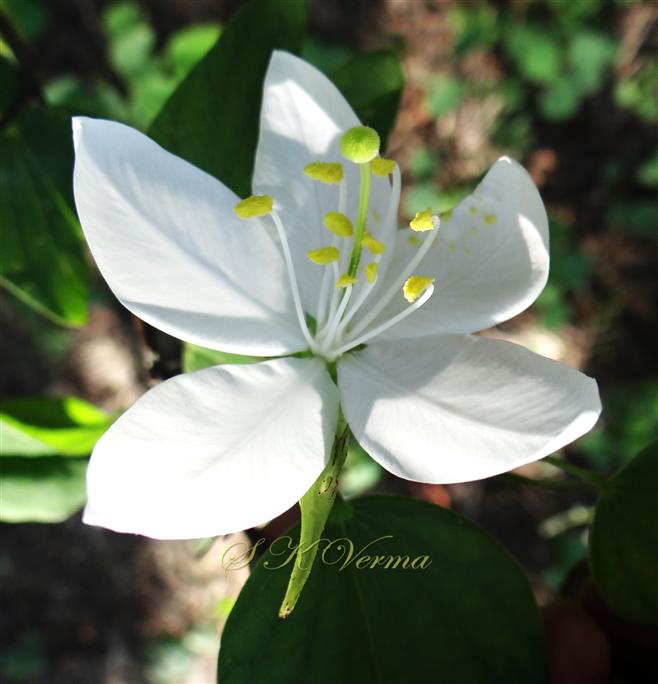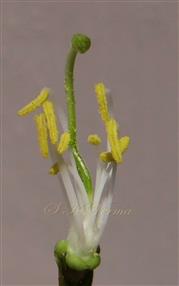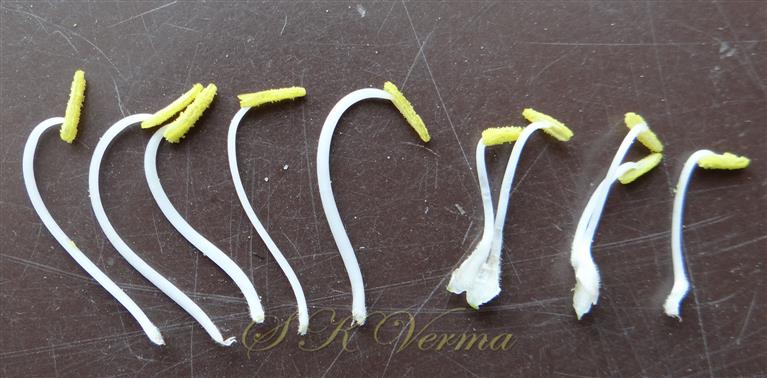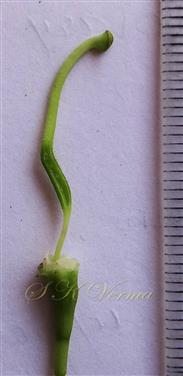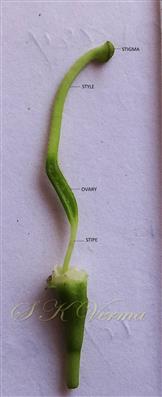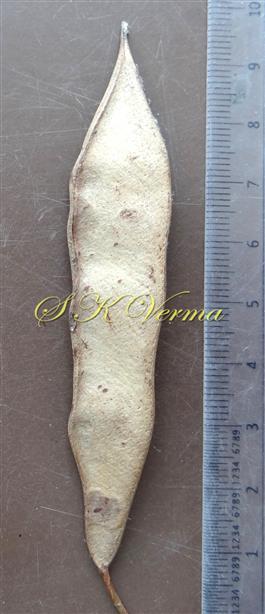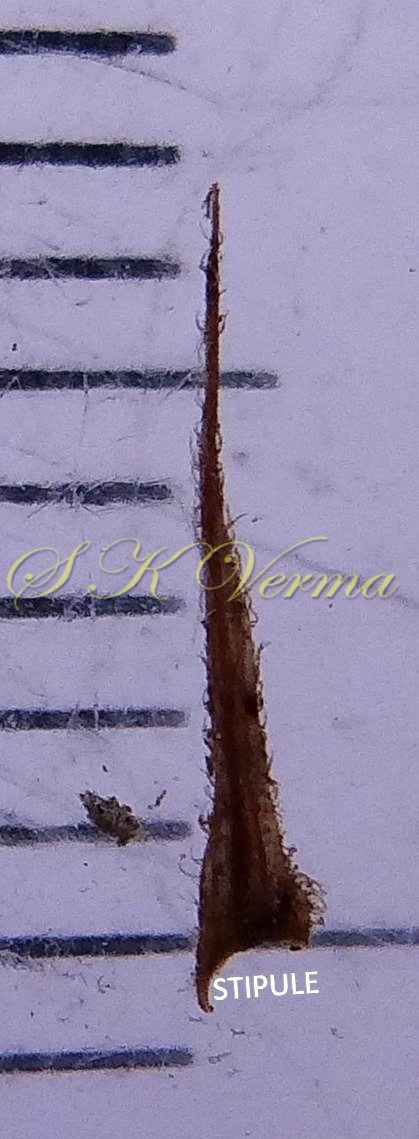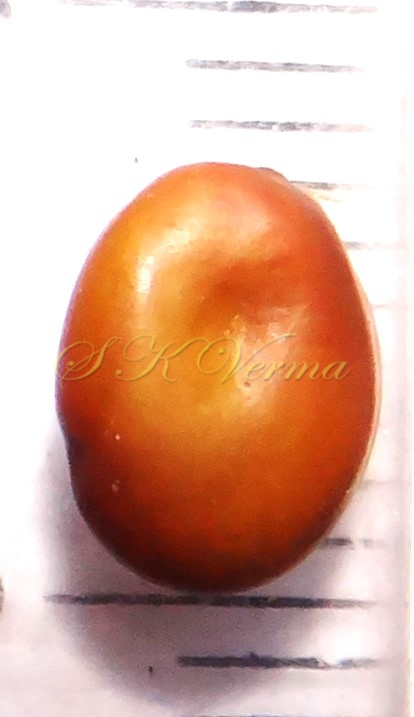BAUHINIA
Bauhinia
Plum. ex L., Sp. Pl. 374. 1753; Gen. Pl. ed. 5. 177. 1754; Parker, For. Fl. Punj. ed.1. 176. 1918 (Reprint 1973); Chen et al., Fl. China @ eFloras. org: 10: 6; Fl. Pak. @ eFloras.org
Trees or shrubs, erect or climbing by tendrils. Leaves usually simple, more or less deeply cleft at apex, rarely entire or divided into two leaflets with a shared upper pulvinus; primary veins 3-15, midvein ending with a free small point; stipules various, caducous. Flowers zygomorphic, bisexual, pentamerous, perigynous. solitary or few to many flowers in racemes, panicles or corymbs; bracts and bracteoles usually small and caducous. Hypanthium cupular, campanulate or tubular. Calyx tube short, turbinate or campanulate or long and tubular, lined with the disk to the top; limb entire and spathaceous or cleft into 2-5 valvate lobes, rarely imbricate. Petals 5, subequal, erect or spreading, narrowed at the base into a claw, imbricate, upper (adaxial or posterior) innermost; variously coloured, white, yellow, pink, red or purple. Stamens 10, all fertile or 1-9 stamens reduced to staminodes or absent; filaments free, filiform; anthers dorsifixed or versatile, dehiscing longitudinally. Monocarpellary, ovary stipitate, rarely subsessile, the stipe usually adnate to the upper side of calyx tube, ovary unilocular, ovules 2-many, placentation marginal; style long or short, usually curved; stigma small or large and peltate, subterminal or oblique. Legumes flat, elliptic, oblong, obovoid or linear, woody or thin walled, dehiscent or indehiscent. Seeds few to many.
194 species
Bauhinia acuminata
Bauhinia acuminata
L., Sp. Pl. 1: 376. 1753; Parker, For. Fl. Punj. ed.1. 180. 1918 (Reprint 1973); Chen et al., Fl. China @ eFloras. org: 10: 9.
Shrubs or small trees, up to 3 m tall; young branches zigzag, glabrous. Stipules ca. 6 mm long, linear, pubescent, caducous. Leaves alternate; petiole 3-4 cm, pubescent, pulvinate at base and apex; leaf blade ovate-cordate to cordate, 8-13 cm long, nearly as broad as long, cleft nearly half way down (1/3 to 2/5), lobes acuminate or slightly subobtuse, subleathery, glabrous above, finely pubescent beneath, base slightly cordate; 7-9-nerved, midvein ending with a free small outgrowth. Flowers zygomorphic, bisexual, pentamerous, perigynous, large, 6-6.5 cm across, white, appearing with young leaves in short lateral or terminal few-flowered racemes, appearing cymose; peduncle short, pubescent. Flower buds ca. 2.5 cm actually tapering and ending in 5 linear calyx teeth (ca. 3 mm long). Hypanthium tubular; bracts ca. 8 mm long and bracteoles ca. 4 mm long, linear, pubescent. Pedicels 1.3-1.8 cm long. Calyx 2.5-3.2 cm long, tube very short; limb spathaceous, narrowed to a long point, cleft at the tip. Petals 5, free, ascending imbricate, upper (adaxial or posterior) innermost, white, obovate-elliptic, 3-3.2 cm x 1.6-1.8 cm, sessile. Stamens 10, in two whorls, all fertile, subequal; filaments 1.2-2 cm; anthers 4-5 mm long, oblong, versatile. Ovary prominently stipitate, stipe 10 mm long, pubescent or almost glabrous, ovary ca. 7 mm long, flat, pubescent, unilocular, 9-10-ovuled, placentation marginal; style ca. 10 mm long, slender; stigma peltate, ca. 3 mm in diameter. Legumes straight or slightly curved, linear-oblanceolate, compressed, 9 cm x 1.5 cm, apex acuminate, beaked; stipitate, stipe ca. 10 mm long; valves leathery, glabrous, sharply ridged near suture. Seeds 3, compressed, 6-7 mm x 4-5 mm, brown, obovate or broadly oblong.
Common Names: Dwarf White Bauhinia, White Orchid Tree, Snowy Orchid Tree
